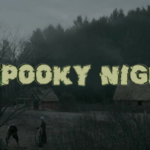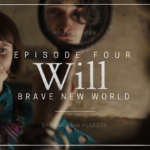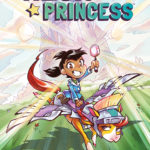
I have a type. It’s not necessarily a type that plays out in my romantic partners, but it certainly comes out when I talk about my crushes. I love tall brunettes with strong conviction, especially if it’s connecting back to social justice. While I don’t know how much stock I should put into how my childhood obsessions impact my adult self, I’m beginning to wonder if Esmeralda from The Hunchback of Notre Dame was the start of this type.

For context, The Hunchback of Notre Dame is my favorite Disney movie. Sure, The Lion King resulted in a strange baby trans moment of me only going by Simba for a year, but The Hunchback of Notre Dame is one of the few Disney movies I have rewatched and enjoyed multiple times as an adult. I understand that it’s not perfect; not only is the premise of a family friendly version of a dark Victor Hugo novel ridiculous, but a gargoyle voiced by Jason Alexander? Really? However, its themes have found a way to be relevant to me well into my adulthood. With its relatively frank discussions of genocide, ableism, abuse, to sexism, I wonder what people would think of the movie if it was released in 2017.
Regardless of its timeliness, I was a nineties child who was gladly swept up in the promotion of the movie. I acquired a lot of merchandise throughout the year of its release, but my favorite pieces were always the ones that featured Quasimodo or Esmeralda. The former, because he was the character I identified with the most and the latter, because I thought she was gorgeous.
 To be fair, Esmeralda is a character that is designed to be wanted. She is an unfortunate member of the club of brown Disney women who were overly sexualized in pretty much all aspects of their character design. I couldn’t articulate it at the time, but I was obsessed with how my Esmeralda doll had exposed shoulders and a skirt that always seemed to ride up. Of course, I didn’t realize that this was me being gay. I was six years old and all I knew was that Esmeralda was like no one I’d ever met.
To be fair, Esmeralda is a character that is designed to be wanted. She is an unfortunate member of the club of brown Disney women who were overly sexualized in pretty much all aspects of their character design. I couldn’t articulate it at the time, but I was obsessed with how my Esmeralda doll had exposed shoulders and a skirt that always seemed to ride up. Of course, I didn’t realize that this was me being gay. I was six years old and all I knew was that Esmeralda was like no one I’d ever met.
Exotification aside, she really wasn’t. I was born and raised in a very conservative pocket of New Jersey. My town was so white, the fact that I was Italian American was othering. I wasn’t really seeing Rroma women like Esmeralda everyday. I was also not seeing women who believed in social justice like her.
Say what you will about Disney’s The Hunchback of Notre Dame in terms of an adaptation of Victor Hugo’s novel, but it definitely provided a massive upgrade to Esmeralda as a character. Not only did they do away with the offensive twist of her being kidnapped by Rroma people as a baby, they aged her up from her mid-teens to her early twenties, and they made her a mouthpiece for what was right. She was the one who began to help Quasimodo make sense of the years of trauma he endured at the hands of Frollo, called for an end to the persecution of her people, and literally spat in the face of sexual harassment that was aimed at her. As dramatic as it sounds, she’s as beautiful as she is aspirational.
As stated earlier, I was the kid who found himself relating to Quasimodo. It’s taken me until I was an adult to fully understand why. I, too, was an isolated, abused person who loved artistic endeavors and was not in the best environment for myself. Even though I was not an active participant in the plot while I watched it, I found myself absolutely transfixed on Esmeralda. She was able to show a new way of thinking and I was able to grow with Quasimodo throughout the development of the film. It was probably why I took such a deep offense to Esmeralda’s decision to go with Phoebus at the end of it. I mean, I get it now. I promise. Though I will admit that I’ve gone online a few times throughout my youth to see if I was alone in this opinion.

It’s been a little over twenty years since the Disney version of The Hunchback of Notre Dame was released. Since then, I’ve had this tradition of every year or so revisiting it, as well as other variations of it, such as the novel and the musical. I know pretty much every verion of it inside and out, which makes revisiting it even more comforting. It may sound silly, but its familiarity allows me to get swept up in certain moments, like Quasimodo and Esmeralda looking down at Paris from the top of Notre Dame. The musical features a song during this scene, in which Esmeralda refers to their observation as “gazing from the top of the world.” It’s a comforting moment between friends that I can imagine being in the scene with them. For a brief moment, I find myself at ease with them, too.
It probably explains the brief crushes I get on strong brunettes I’ve met throughout my life. I rarely act on them, but it’s enjoyable feeling on top of the world near them. And like the fantasy world that Esmeralda is able to share with me at the top of Notre Dame, I can stay in it until I’ve calmed down and rejoined reality.



